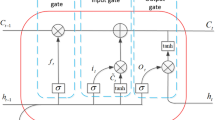Abstract
The quality of anesthesia is of great value to the risk of surgery and the recovery of postoperative patients. The evaluation of depth of anesthesia through EEG signals is an effective method to improve the quality of anesthesia. The difficulty of anesthesia depth evaluation lies in the lack of a relatively stable algorithm. In this study, the permutation and entropy algorithm are used as the system algorithm. Meanwhile, this study combines with the anesthesia depth assessment needs and actual conditions to improve the algorithm and realize the anesthesia depth detection function by extracting the feature parameters of different fields of EEG signals. In addition, this study analyzes multiple channels of EEG signals through adaptive neural networks to obtain quantified anesthesia depth values and compares this value with IoC monitors. Through experimental research, we can see that the method proposed in this paper has a certain practical effect.


















Similar content being viewed by others
References
Laflam A, Joshi B, Brady K et al (2015) Shoulder surgery in the beach chair position is associated with diminished cerebral autoregulation but no differences in postoperative cognition or brain injury biomarker levels compared with supine positioning: the anesthesia patient safety foundation beach chair study. Anesth Analg 120(1):176
Dunham CM, Hileman BM, Hutchinson AE et al (2014) Perioperative hypoxemia is common with horizontal positioning during general anesthesia and is associated with major adverse outcomes: a retrospective study of consecutive patients. BMC Anesthesiol 14(1):43
Khandelwal N, Khorsand S, Mitchell SH et al (2016) Head-elevated patient positioning decreases complications of emergent tracheal intubation in the ward and intensive care unit. Anesth Analg 122(4):1101–1107
Kim MS, Bai SJ, Lee JR et al (2014) Increase in intracranial pressure during carbon dioxide pneumoperitoneum with steep trendelenburg positioning proven by ultrasonographic measurement of optic nerve sheath diameter. J Endourol 28(7):801–806
Bang SR, Lee SE, Ahn HJ et al (2014) Comparison of respiratory mechanics between sevoflurane and propofol-remifentanil anesthesia for laparoscopic colectomy. Korean J Anesthesiol 66(2):131
Cho SY, Kim J, Park SH et al (2015) Vasopressin ameliorates hypotension induced by beach chair positioning in a dose-dependent manner in patients undergoing arthroscopic shoulder surgery under general anesthesia. Korean J Anesthesiol 68(3):232
Moll J, Erb TO, Frei FJ (2015) Assessment of three placement techniques for individualized positioning of the tip of the tracheal tube in children under the age of 4 years. Pediatr Anesth 25(4):379–385
Kolker A, Mascarenhas J (2015) Anesthesia for outfield procedures in cancer patients. Curr Opin Anaesthesiol 28(4):464–468
Hasanin A, Mokhtar AM, Badawy AA et al (2017) Post-spinal anesthesia hypotension during cesarean delivery, a review article. Egypt J Anaesth 33(2):189–193
Drummond JC, Krane EJ, Tomatsu S et al (2015) Paraplegia after epidural-general anesthesia in a Morquio patient with moderate thoracic spinal stenosis. Can J Anesth/J can d’anesth 62(1):45–49
Haršanji Drenjančević I, Drenjančević D, Gulam D et al (2015) Arterial pressure and heart rate changes in patients during “beach chair position” for shoulder surgery: comparison of the regional and general anesthesia techniques. Periodicum Biol 117(2):277–280
Aguirre J, Borgeat A, Trachsel T et al (2014) Cerebral oxygenation in patients undergoing shoulder surgery in beach chair position: comparing general to regional anesthesia and the impact on neurobehavioral outcome. Rev Esp Anestesiol Reanim 61(2):64–72
Brecker SJD, Bleiziffer S, Bosmans J et al (2016) Impact of anesthesia type on outcomes of transcatheter aortic valve implantation (from the Multicenter ADVANCE Study). Am J Cardiol 117(8):1332–1338
Kawano H, Matsumoto T (2014) Anesthesia for arthroscopic shoulder surgery in the beach chair position: monitoring of cerebral oxygenation using combined bispectral index and near-infrared spectroscopy. Middle East J Anaesthesiol 22(6):613–617
Cockcroft JOB, Berry CB, McGrath JS et al (2015) Anesthesia for major urologic surgery. Anesthesiol Clin 33(1):165–172
Aguirre JA, Märzendorfer O, Brada M et al (2016) Cerebral oxygenation in the beach chair position for shoulder surgery in regional anesthesia: impact on cerebral blood flow and neurobehavioral outcome. J Clin Anesth 35:456–464
Abdallah FW, Macfarlane AJR, Brull R (2016) The requisites of needle-to-nerve proximity for ultrasound-guided regional anesthesia: a scoping review of the evidence. Reg Anesth Pain Med 41(2):221–228
Verma V, Beethe AB, LeRiger M et al (2016) Anesthesia complications of pediatric radiation therapy. Pract Radiat Oncol 6(3):143–154
Kalmar AF, Allaert S, Pletinckx P et al (2018) Phenylephrine increases cardiac output by raising cardiac preload in patients with anesthesia induced hypotension. J Clin Monit Comput 32(6):969–976
Yu HC, Al-Shehri M, Johnston KD et al (2016) Anesthesia for hip arthroscopy: a narrative review. Can J Anesth/J can d’anesth 63(11):1277–1290
Owusu-Agyemang P, Grosshans D, Arunkumar R et al (2014) Non-invasive anesthesia for children undergoing proton radiation therapy. Radiother Oncol 111(1):30–34
Akavipat P, Hungsawanich N, Jansin R (2014) Alternative placement of bispectral index electrode for monitoring depth of anesthesia during neurosurgery. Acta Med Okayama 68(3):151–155
Author information
Authors and Affiliations
Corresponding author
Ethics declarations
Conflict of interest
The authors declare that they have no conflict interest.
Additional information
Publisher's Note
Springer Nature remains neutral with regard to jurisdictional claims in published maps and institutional affiliations.
Rights and permissions
About this article
Cite this article
Zhang, W., Yu, H., Duan, Z. et al. Anesthesia depth evaluation algorithm based on permutation and combination entropy. Neural Comput & Applic 34, 6647–6660 (2022). https://doi.org/10.1007/s00521-021-06030-6
Received:
Accepted:
Published:
Issue Date:
DOI: https://doi.org/10.1007/s00521-021-06030-6




